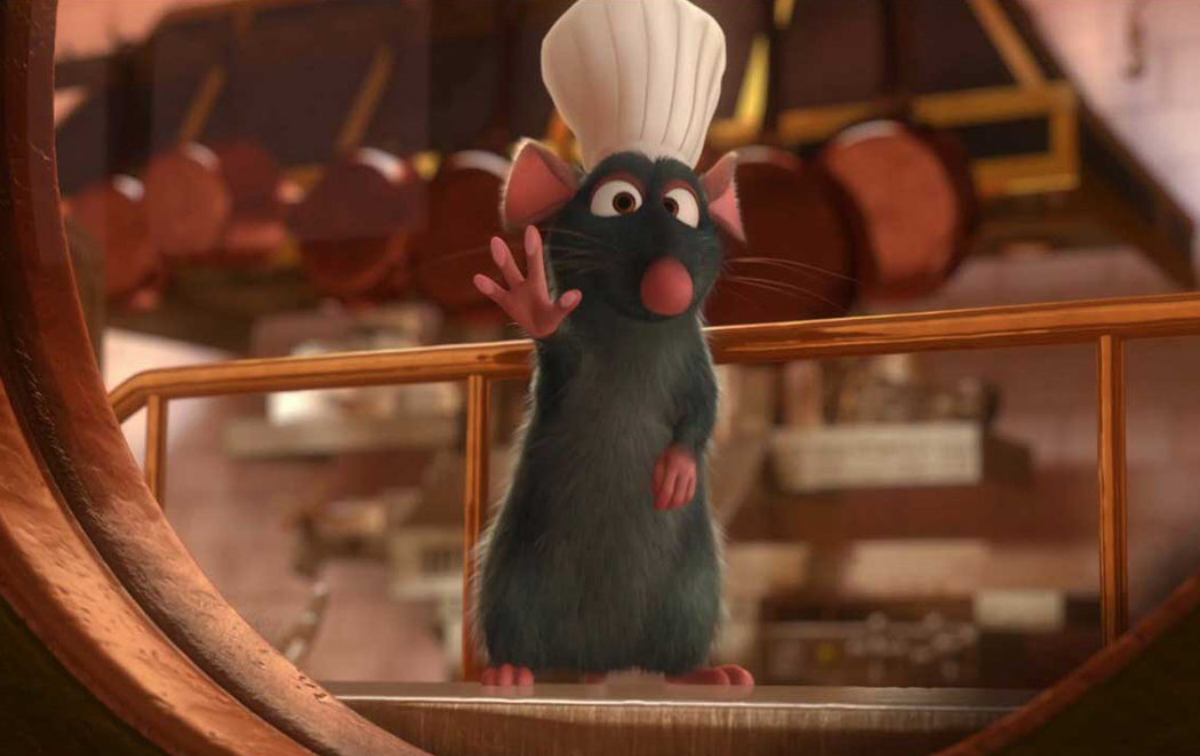Discover the secrets to making remy:vuvr2yhzv9m= ratatouille , the vibrant French dish featured in Pixar’s movie. Explore history, ingredients, and step-by-step tips for creating this colorful masterpiece.
Introduction
There’s something magical about the way a dish can evoke memories, emotions, and even dreams of culinary greatness. This is precisely what Ratatouille has done for many fans around the world, thanks to its vibrant portrayal of a simple vegetable dish brought to life by Remy, the rat with a passion for fine dining. Remy’s Ratatouille is not just a meal; it’s a symbol of creativity, artistry, and the importance of pursuing one’s passion, no matter the odds. The rich layers of flavors, colors, and textures speak volumes about the beauty of food when it’s crafted with care. Whether you’re an aspiring home cook or an experienced chef, recreating Remy’s Ratatouille in your kitchen is an opportunity to explore French culinary tradition while embracing your own artistic expression.
In this article, we’ll take a deep dive into the history of Remy’s Ratatouille, explore the essential ingredients, understand the cooking techniques, and give you tips to elevate this humble dish to restaurant-quality status. Not only will we help you recreate Remy’s masterpiece, but we’ll also uncover the heart and soul of a dish that represents creativity in every bite.
The History of Remy’s Ratatouille
Ratatouille has a rich and humble history that dates back to the region of Provence, France, where it originated as a peasant dish made with fresh, seasonal vegetables. The word “ratatouille” comes from the French verb rata, meaning to stir or mix, and touiller, meaning to toss or stir. Historically, it was a simple, rustic dish made by peasants to utilize whatever vegetables were available in the garden. Farmers would prepare it during the summer months when produce like zucchini, tomatoes, eggplant, and peppers were at their peak.
The dish was often prepared as a way to feed large families with nutritious, affordable ingredients, and it eventually became a regional favorite. Over time, Remy’s Ratatouille evolved from a dish of necessity into a beloved classic, featuring a variety of vegetables in a harmonious stew or, as portrayed in the film, a beautifully arranged layered presentation. While the traditional recipe calls for sautéing the vegetables together, the film’s take on Ratatouille introduced a modern twist, elevating it to a visually striking and gourmet dish. Today, ratatouille can be found on restaurant menus worldwide, cherished not only for its flavor but for the way it highlights the use of fresh, seasonal produce.
The film Ratatouille immortalized this dish, making it a symbol of the culinary arts, and Remy, the rat, became a relatable figure for anyone who has ever felt like an underdog striving to create something extraordinary. By showcasing the beauty of the dish in the context of an animated feature, it brought ratatouille into the global spotlight, making it more than just a vegetable stew—it became a canvas for creativity and a testament to the importance of following one’s dreams.
Key Ingredients in Remy’s Ratatouille
To recreate Remy’s Ratatouille, it’s essential to use the right ingredients. The beauty of this dish lies in its simplicity, relying on fresh vegetables to shine through with bold flavors and vibrant colors. The ingredients you choose will make or break your version of this dish, so it’s worth taking the time to select high-quality produce that is in season.
The base of Remy’s Ratatouille is made up of four main vegetables: zucchini, eggplant, bell peppers, and tomatoes. These vegetables are cut into thin slices, allowing them to be arranged in an aesthetically pleasing way, much like the spiralized layers seen in the movie. The zucchini adds a delicate texture and mild flavor, while the eggplant contributes a meaty, slightly smoky undertone. Bell peppers provide a burst of sweetness and color, and tomatoes add juiciness and a tangy bite that ties the flavors together.
In addition to these key vegetables, fresh herbs are an essential component of Remy’s Ratatouille. Herbs like basil, thyme, and rosemary bring depth and fragrance to the dish. Fresh basil adds a peppery and aromatic note, while thyme offers a woodsy, earthy flavor that complements the vegetables. Rosemary, though optional, provides a savory, slightly pine-like aroma that enhances the overall flavor profile.
Finally, the dish wouldn’t be complete without olive oil, garlic, and a touch of salt and pepper. Olive oil serves as the base for sautéing the vegetables and helps to infuse them with richness, while garlic provides an aromatic depth. Salt and pepper are necessary to balance the natural sweetness of the vegetables and bring out their full flavor potential.
How to Prepare Remy’s Ratatouille
The key to making Remy’s Ratatouille is patience and precision. Although it’s a simple dish, the technique of layering the vegetables is what makes it a showstopper. The vegetables must be sliced thinly and uniformly to achieve that perfect spiral or layered presentation. Here’s a step-by-step guide to preparing this dish in your own kitchen.
- Prepare the Vegetables: Begin by washing and peeling the vegetables. Slice the zucchini, eggplant, and bell peppers into thin rounds, about 1/8-inch thick. The tomatoes should also be sliced thinly but can be left a bit thicker for added texture.
- Sauté the Base: Heat olive oil in a large skillet over medium heat. Add finely chopped garlic and sauté until fragrant, being careful not to burn it. Once the garlic is aromatic, add the onions and cook until they become translucent, about 5 minutes. Season with salt, pepper, and a sprinkle of dried thyme.
- Arrange the Vegetables: Preheat your oven to 375°F (190°C). In a baking dish, create a spiral or layered arrangement of the sliced vegetables. Start with a layer of zucchini, followed by eggplant, bell peppers, and tomatoes. Repeat until the dish is filled, alternating the vegetables to create a colorful and visually appealing arrangement.
- Season and Roast: Drizzle olive oil over the top of the arranged vegetables, then sprinkle with fresh thyme, salt, and pepper. Cover the dish with foil and bake for 30-40 minutes, or until the vegetables are tender. For a more roasted effect, remove the foil in the last 10 minutes of cooking to allow the vegetables to brown slightly.
- Finishing Touches: Once the vegetables are cooked, remove them from the oven and let them rest for a few minutes. For extra flavor, you can drizzle more olive oil over the top and garnish with freshly chopped basil. Serve hot and enjoy this vibrant, flavorful dish that’s as beautiful as it is delicious.

How to Make Your Ratatouille Look Like Remy’s
In the movie, Remy’s Ratatouille is as much about presentation as it is about flavor. To truly replicate the film’s stunning visuals, you’ll need to focus on creating a beautiful arrangement. The key is to slice the vegetables uniformly, ensuring that each layer is similar in size and shape. When arranging the vegetables, try to create a spiral shape, or if you’re using a rectangular baking dish, layer them tightly to showcase the colorful variety of vegetables.
You can also experiment with different shapes and arrangements, such as a rosette or even a fan-like pattern. The more artistic you are with the vegetable placement, the closer you’ll get to the stunning visual in the film. Remember, the beauty of Remy’s Ratatouille lies not only in its flavors but in its ability to delight the eyes as well.
If you want to go the extra mile, consider adding a garnish of finely chopped herbs or a drizzle of high-quality olive oil. This extra touch elevates the dish, making it feel like it belongs in a five-star restaurant.
Creating a Visual Feast
Layering the vegetables for Remy’s Ratatouille is more than just a cooking technique; it’s an art form. Each vegetable should be arranged so that it complements the others, both in terms of flavor and color. Think of it as a painting, with each slice of vegetable representing a brushstroke. The goal is to create a harmonious balance of colors—rich purples from the eggplant, bright greens from the zucchini, deep reds from the tomatoes, and the vibrant yellows and oranges of the bell peppers. The key is to make the layers look intentional and beautiful.
To achieve this, it’s important to take your time when arranging the vegetables. Use your hands or tweezers for more precision, and place each slice carefully to ensure that the dish is visually stunning from every angle. When you’re satisfied with the arrangement, it’s time to move on to the roasting process.
Variations of Remy’s Ratatouille
While the classic version of Remy’s Ratatouille is undoubtedly delicious, there are plenty of variations you can experiment with to make the dish your own. One popular variation involves adding a tomato sauce base to the dish. After sautéing the onions and garlic, you can add crushed tomatoes, herbs, and a bit of sugar to create a rich sauce that serves as a base for the vegetables.
For a heartier version, you can also add some protein, such as grilled chicken, fish, or even tofu. This transforms the dish into a full meal while maintaining its vibrant vegetable medley. Some people also like to add cheese, such as goat cheese or Parmesan, to enhance the richness of the dish. Simply sprinkle it over the top of the vegetables before roasting, and let the cheese melt beautifully as the ratatouille cooks.
If you want to make Remy’s Ratatouille a bit spicier, consider adding a pinch of red pepper flakes or a dash of cayenne pepper. This gives the dish an extra kick without overpowering the natural flavors of the vegetables. You can also try adding a splash of balsamic vinegar or lemon juice for acidity, which balances the sweetness of the vegetables.
Serving Suggestions for Remy’s Ratatouille
Remy’s Ratatouille is a versatile dish that pairs well with a variety of sides. For a light and refreshing meal, serve it with a simple green salad dressed in lemon vinaigrette. The freshness of the salad complements the richness of the ratatouille perfectly. If you’re looking for something heartier, serve it with a side of crusty French bread or roasted potatoes. The bread can be used to soak up any leftover sauce, making it an ideal accompaniment.
For a more elegant presentation, consider pairing the ratatouille with a glass of chilled rosé wine. The crisp, light notes of rosé will pair beautifully with the earthy vegetables and fresh herbs, creating a harmonious dining experience.

Conclusion
In the world of French cuisine, Remy’s Ratatouille stands out as a dish that transcends its humble origins to become a symbol of creativity, artistry, and the pursuit of excellence. Whether you’re making it for a family dinner or serving it at a dinner party, this dish is sure to impress both in flavor and presentation. By following the steps outlined in this guide, you’ll be able to recreate the dish exactly as it appears in the film and put your own spin on it, showcasing your culinary prowess.
Remy’s Ratatouille isn’t just about cooking vegetables; it’s about creating a work of art that pleases all the senses. It’s about taking simple ingredients and transforming them into something extraordinary. So next time you’re in the kitchen, remember Remy’s message: “Anyone can cook.” All it takes is a little creativity, passion, and the willingness to try something new.
Read also: ZeroDeviceNet: The Ultimate Tech Hub for Enthusiasts





